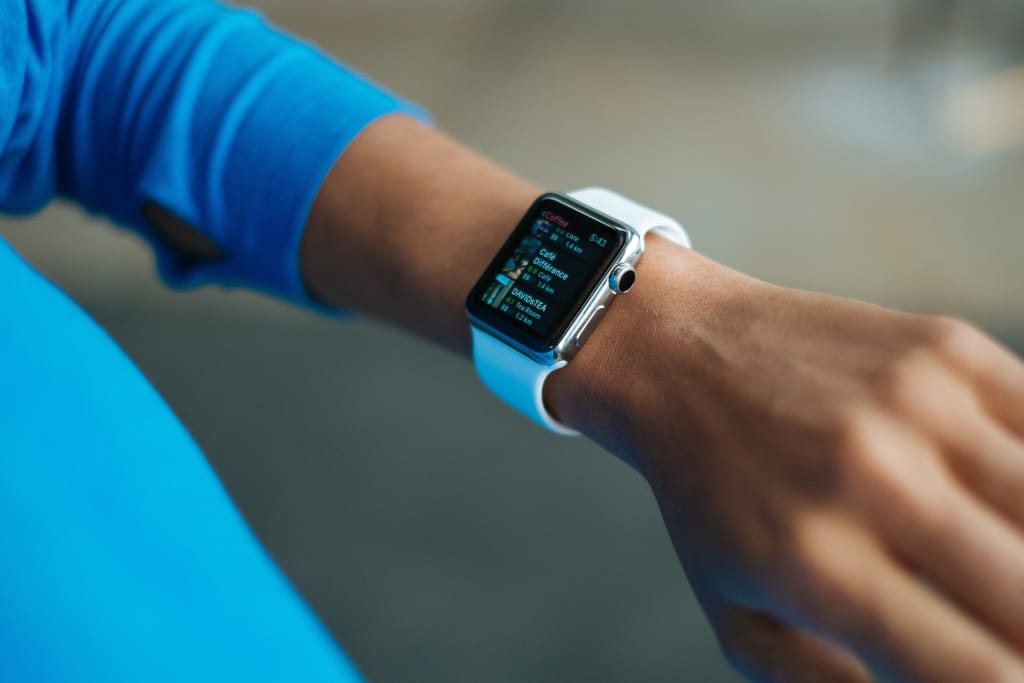The Evolution of Smartwatches: From Early Designs to the Latest Technology
Tracing the Advancements and Innovations that Have Shaped Modern Smartwatches

Smartwatches have become a popular wearable technology that many people use daily. They have become a versatile device that allows you to track your health, receive notifications, control your smart home devices, and even make phone calls. But have you ever thought about how far smartwatches have come since their inception? In this article, we will explore the evolution of smartwatches, from early designs to the latest technology.
Early Smartwatches:
The first smartwatch was introduced in 1984 by Seiko, which was called the Seiko RC-1000. This watch had a small screen that displayed text, a calculator, and a calendar. However, it was not very successful due to its high price and limited functionality.
The next significant development came in the early 2000s, with watches like the Fossil Wrist PDA and the Microsoft SPOT. The Fossil Wrist PDA was a small PDA device that could be worn on the wrist, while the Microsoft SPOT was designed to receive news, weather, and other information wirelessly.
The Rise of Fitness Trackers:
In the mid-2000s, fitness trackers began to emerge. They were the first smartwatches that gained mass popularity, and many people still use them today. They are designed to monitor physical activity and health, including steps taken, heart rate, and sleep patterns. The first fitness tracker was the Nike+ FuelBand, which was released in 2012, followed by the Fitbit in 2013.
The Latest Smartwatches:
Today, smartwatches have come a long way from the early designs. They now have a vast range of features, including GPS tracking, mobile payments, voice assistants, and even music playback. Companies like Apple, Samsung, and Garmin are among the top smartwatch manufacturers in the world.
One of the latest innovations in smartwatches is the addition of cellular connectivity, allowing you to make and receive calls without the need for a phone. They also offer more accurate fitness tracking, with heart rate monitors and other sensors built into the watch.
The first smartwatches were bulky and had limited battery life. Today's smartwatches are sleeker, lighter, and have much longer battery life.
One of the most significant challenges facing early smartwatch manufacturers was the limited computing power and memory available in the devices. This made it difficult to create advanced features and applications. However, advancements in miniaturization and computer technology have made it possible for modern smartwatches to offer a wide range of features.
Early smartwatches relied on a wired connection to a mobile phone or computer to access the internet and other data. However, advancements in wireless communication technologies, such as Bluetooth and Wi-Fi, have made it possible for smartwatches to connect wirelessly to the internet and other devices.
The introduction of app stores for smartwatches has been a significant development, allowing users to download and install applications directly onto their device. This has opened up a world of possibilities for developers to create new and innovative applications that take advantage of the unique features of smartwatches.
Smartwatches have become an essential part of the Internet of Things (IoT) ecosystem, allowing users to control and monitor their smart home devices directly from their wrist.
In addition to fitness tracking, smartwatches have also become popular among athletes, with many models offering advanced features such as GPS tracking, heart rate monitoring, and activity recognition.
The trend towards miniaturization and increased functionality is likely to continue in the future, with smartwatches becoming even more integrated into our daily lives.
Overall, the evolution of smartwatches has been rapid and significant, with advancements in technology allowing for the development of increasingly sophisticated and functional devices. Smartwatches have become an essential part of many people's lives, offering a wide range of features that can improve health, productivity, and convenience. As technology continues to evolve, it will be exciting to see what the future holds for this rapidly growing market.
Conclusion:
In conclusion, smartwatches have come a long way from their humble beginnings as a simple watch with a few additional features. They have evolved into a device that is not only fashionable but also functional, with numerous features designed to improve your health, productivity, and overall quality of life. It's exciting to see where smartwatch technology will go next and what new features and innovations will be added to this ever-evolving device.
About the Creator
Enjoyed the story? Support the Creator.
Subscribe for free to receive all their stories in your feed. You could also pledge your support or give them a one-off tip, letting them know you appreciate their work.





Comments
There are no comments for this story
Be the first to respond and start the conversation.